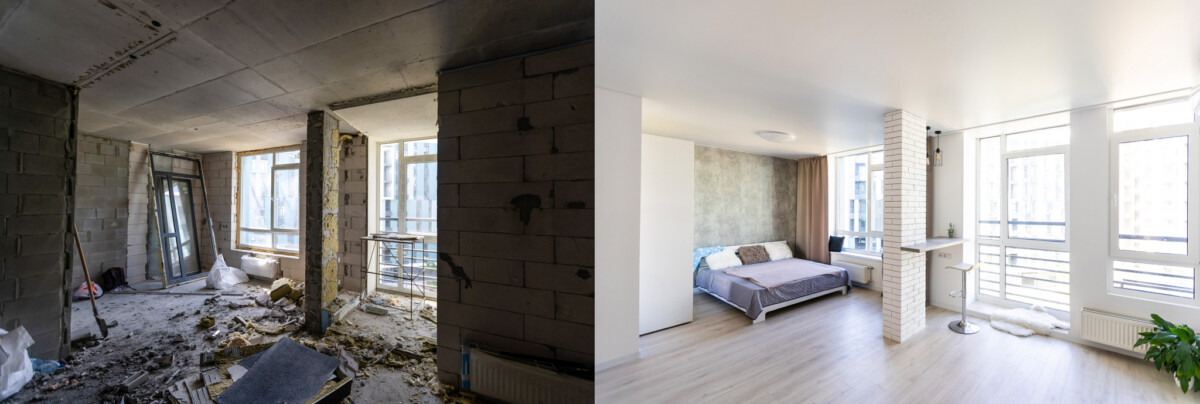Buying a home is one of the most significant investments people make in their lifetime. While every house might have quirks or need some TLC, foundation issues are in their category. Unlike minor cosmetic fixes, foundation problems can indicate severe structural weaknesses that are costly, difficult, and sometimes even impossible to fully repair. Understanding which foundation issues are deal-breakers can save you from potentially devastating repair costs, decreased property value, and ongoing maintenance headaches. Here’s a comprehensive guide on foundation issues that might be cause for walking away from a home purchase.
Major Foundation Cracks
All foundations will experience some cracking over time, often due to settling as the house ages. Small hairline cracks may not be a concern, but large or widening cracks can signal serious issues. Here are some types of foundation cracks to watch out for:
- Horizontal Cracks: Horizontal cracks are a red flag because they often indicate external pressure pushing against the foundation wall, possibly due to soil expansion or poor drainage. These cracks are usually seen in basements and can mean that walls are bowing or moving inward—an expensive and challenging issue to remedy.
- Diagonal Cracks: Diagonal cracks, often found at corners or near windows, may be caused by uneven settling. If these cracks are more comprehensive than 1/4 inch or appear to be growing, it could indicate more serious structural problems.
- Stair-Step Cracks: Found in brick or concrete block walls, stair-step cracks indicate differential settling, where one part of the foundation is settling more than another. Repairing this kind of damage can be complex and may not guarantee a long-term fix.
Significant, extensive cracks are often signs of severe foundation issues, typically problems worth avoiding.
Foundation Wall Movement
Foundation walls that show signs of movement are another deal-breaker. Suppose a foundation wall is bowing inward or tilting. In that case, it usually suggests that the soil outside the foundation exerts too much pressure, potentially due to poor drainage or soil composition. This movement can weaken the foundation over time and cannot only partially be fixed.
Foundation wall movement often requires extensive repairs, such as wall reinforcement with steel beams or complete foundation replacement. Both are costly and invasive processes that only sometimes guarantee a permanent solution. Signs of wall movement include:
- Bowing or bulging walls
- Visible gaps between walls and floors
- Doors and windows that are difficult to open or close
Foundation wall movement can affect the stability of the entire house, making it a serious issue that’s best avoided.
Sloping or Uneven Floors
While some homes—especially older ones—may have slight floor unevenness, noticeable sloping or sagging floors often indicate underlying foundation problems. The floors may tilt or sag when the foundation shifts, affecting the structure’s integrity.
A sloping floor could be caused by:
- Soil settling unevenly under the foundation
- Foundation cracks or shifting
- Damage to floor joists or beams due to moisture
Repairing sloping floors often involves significant foundation work, including pier installation or leveling with jacks. These processes can be costly and invasive and usually require replacing affected flooring materials. Significant floor sloping indicates deep structural problems, making it a substantial reason to walk away.
Water Damage and Drainage Issues
Water is one of the biggest enemies of a home’s foundation. Poor drainage, heavy rainfall, or flooding can cause the soil around the foundation to expand and contract, leading to cracking, shifting, and settling issues. Additionally, water can weaken the foundation walls, create mold and mildew issues, and lead to rot in wooden structures.
Signs of water damage and drainage issues include:
- Standing water near the foundation
- Excessive moisture in the basement or crawl space
- Water stains on basement walls or floors
- A persistent, musty odor
If a property has poor grading (the slope of the ground around the house), water may pool around the foundation. Fixing such issues may involve regrading the property, installing a new drainage system, or even adding a sump pump, which can be expensive. Persistent water-related foundation issues are often not worth the risk.
Foundation Settling and Sinking
All foundations settle over time, but when parts settle unevenly, it can cause structural issues. Sinking foundations are typically due to soil issues beneath the foundation, such as clay-rich soil that expands and contracts or soil that wasn’t properly compacted when the foundation was built.
Signs of a settling or sinking foundation include:
- Gaps between walls and floors
- Doors and windows that stick or don’t latch
- Cracks in walls and ceilings
- Sloping floors
Foundation settling can sometimes be corrected with foundation piers or underpinning, which involves inserting steel supports deep into the soil to stabilize the foundation. However, this type of repair is expensive and doesn’t guarantee that the problem won’t resurface. For many buyers, a home with a significant foundation sinking is a red flag worth walking away from.
Tree Roots Damaging the Foundation
Large trees planted too close to a home can cause foundation issues. Tree roots seek out moisture and can grow under or near a foundation, putting pressure on the foundation walls. Sometimes, they may penetrate the foundation, causing cracks and shifting.
Signs of tree-related foundation issues include:
- Cracks in the foundation near the tree
- Uneven or bulging foundation walls near the tree
- Tree roots visibly near or under the foundation
Removing the offending tree or trees and addressing any foundation damage can be costly. Suppose trees have already caused significant foundation damage. In that case, it’s a sign that the issue could worsen, which may be a reason to reconsider the purchase.
Inadequate Foundation Repairs
In some cases, the seller might have already addressed foundation problems. However, not all foundation repairs are created equal. The underlying issues could not be adequately addressed if the repairs are quick fixes rather than professional solutions. Temporary solutions like filling cracks with sealant or cosmetic fixes may only mask deeper, unresolved problems.
When evaluating foundation repairs, make sure to:
- Ask for a detailed report of all foundation repairs done
- Request information on any warranties for the repair work
- Consult a professional inspector to verify the quality of the repairs
You may incur significant future costs if foundation repairs are not done correctly. However, walking away from a house with substandard foundation repairs could save you from taking on significant expenses.
Conclusion
Foundation issues can compromise a home’s stability, value, and safety. While some minor foundation problems may be manageable, certain issues often warrant walking away, including major cracks, wall movement, sloping floors, water damage, settling or sinking, tree root interference, and inadequate repairs. Investing in a home inspection and possibly a foundation specialist is crucial to understanding the true extent of any foundation issues.
Buying a home with significant foundation problems may lead to years of costly repairs, making it essential to weigh the risks carefully. Knowing when to walk away from foundation issues can save you time, money, and the stress of dealing with ongoing structural challenges.
Thank you for reading! If you enjoyed this article and want to explore more content on similar topics, check out our other blogs at Sonic Loans, Sonic Realty, and Sonic Title. We have a wealth of information designed to help you navigate the world of real estate and finance. Happy reading!
Are you looking for the right loan? Check out Sonic Loans for tailored mortgage solutions that make home financing simple and efficient.











